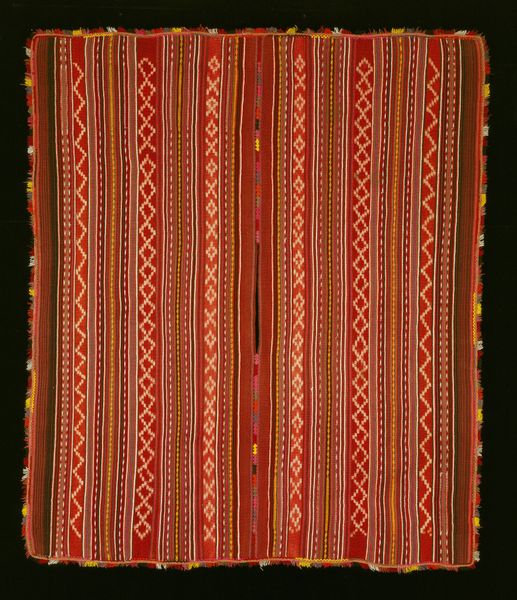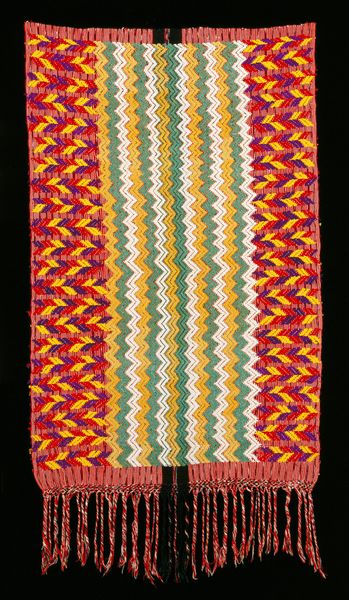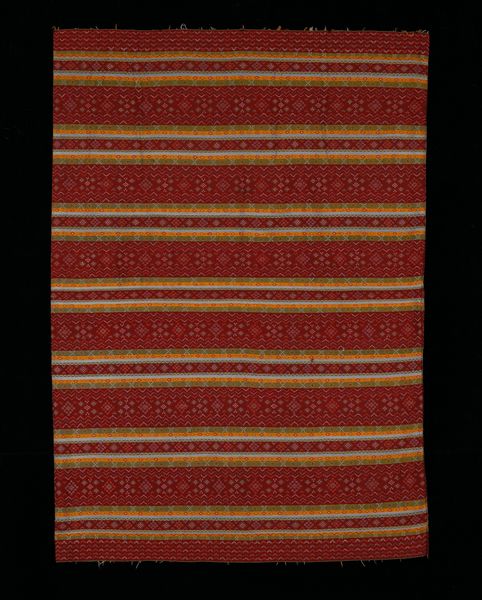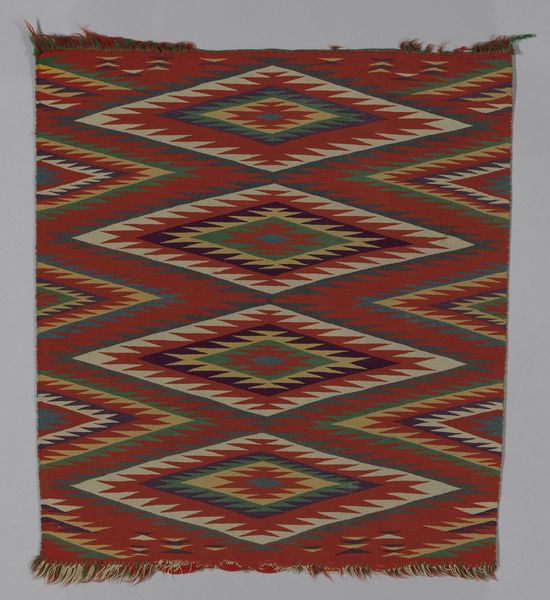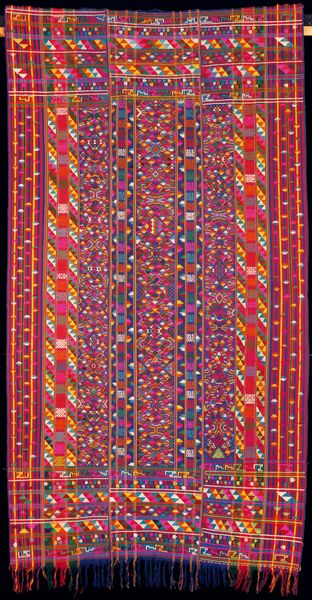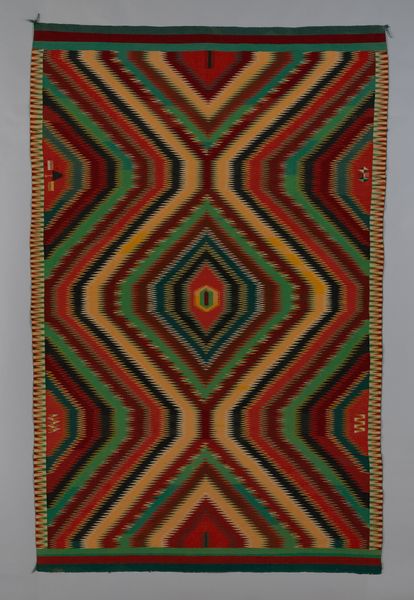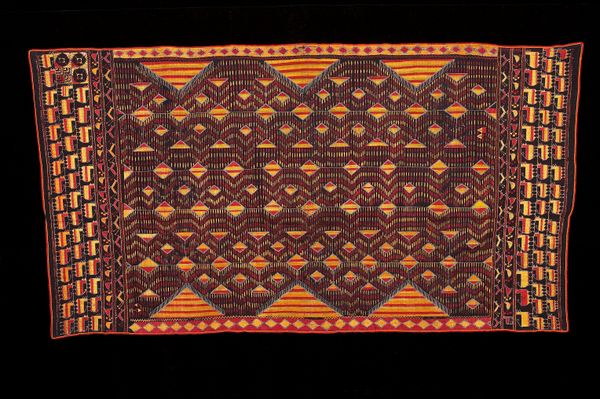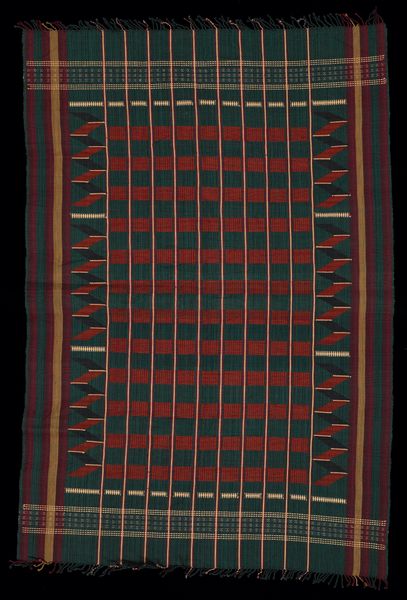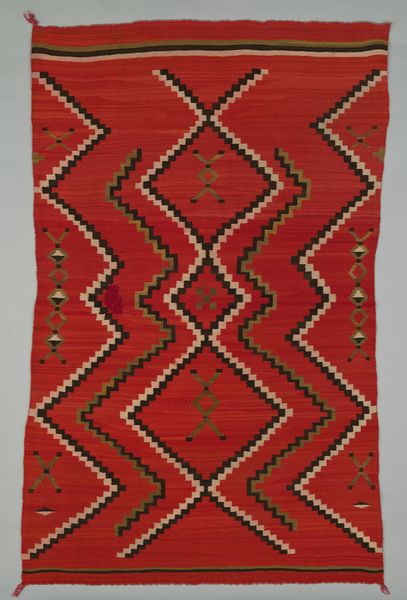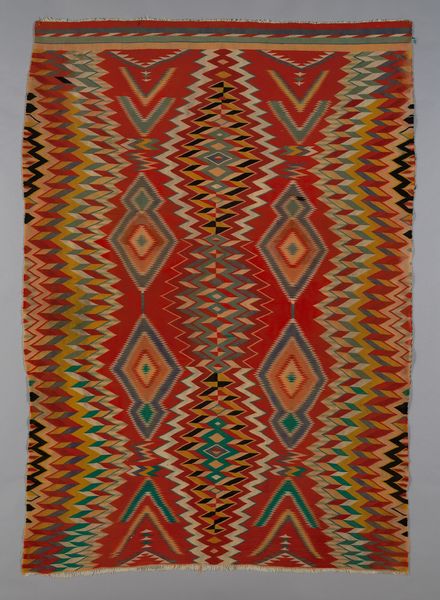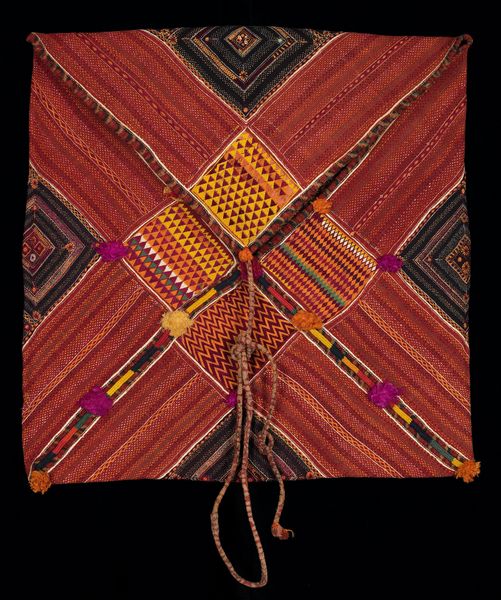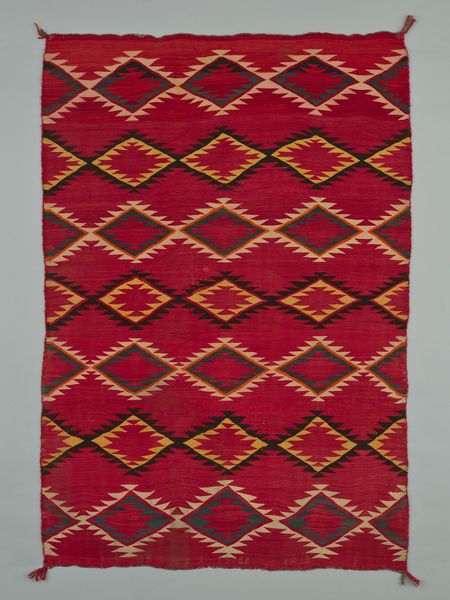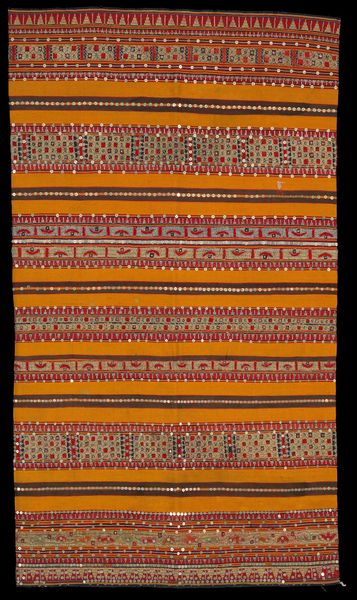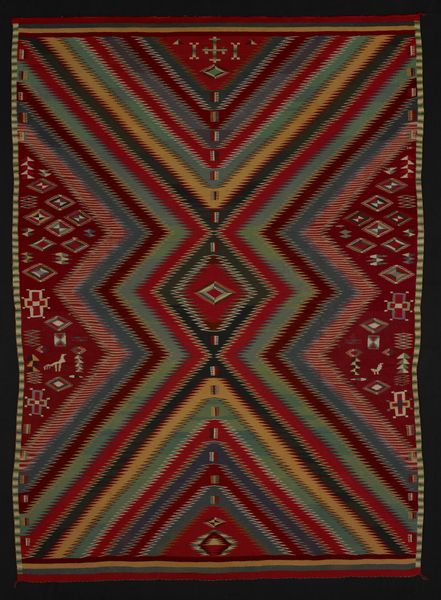
fibre-art, weaving, textile
fibre-art
weaving
textile
geometric pattern
abstract pattern
geometric
repetition of pattern
vertical pattern
pattern repetition
layered pattern
indigenous-americas
Dimensions: 76 x 53 in. (193.0 x 134.6 cm)
Copyright: Public Domain
Curator: Let’s take a closer look at this captivating ‘Eye-dazzler’ Blanket, crafted by Navajo (Diné) artists circa 1890-1895. You can find it here at the Minneapolis Institute of Art. These textiles represent a fascinating moment of cultural exchange and adaptation. Editor: Wow, "eye-dazzler" is right! My eyes don’t know where to land! It’s vibrating with all these geometric shapes – red, mainly red, but there’s yellows and muted greens playing together so energetically. It looks almost...electric! Curator: Indeed. These vibrant blankets emerged during a period of significant transition for Navajo weavers. The introduction of aniline dyes from Europe allowed for brighter, bolder colors than were previously achievable with natural dyes, fueling the "eye-dazzler" style characterized by its intensity and complexity. We should contextualize how colonial influence impacted art creation and explore this tension. Editor: It feels almost intentionally disorienting, in a good way. Makes me think about Op Art, only with this incredibly warm, handmade feel. What a cool contradiction. It is wild to think about this as utilitarian because it just speaks to the power, even rebellion of artistic expression within, possibly despite of, colonial impact. Curator: Absolutely, this seemingly abstract textile becomes a site for contemplating how Indigenous artistry engaged, negotiated, and sometimes even resisted encroaching commercial forces and colonial ideologies. Weaving was a vital economic activity, but it also retained profound cultural significance. We have to remember, identity is always present here. Editor: Right. Each little zig and zag is imbued with meaning and that’s something you can't simply strip away with a change of materials, no matter how "eye-dazzling". In the end, the blanket is more than its weaving but a deep, personal meaning, still warm centuries later. Curator: Precisely. This ‘Eye-dazzler’ Blanket isn't just a beautiful object. It invites critical questions about the market's influence on artistic practices, how tradition is maintained, and the intersection of cultural exchange, commerce, and identity within the broader narratives of art history. Editor: Agreed, these dynamic diagonals and vibrant shades end up reflecting the layered history in which this piece participated and how artists have transformed expectations while telling new stories. It speaks to how creation can, at once, blind and make one see the world with newfound clarity.
Comments
In the mid to late 1800s, brilliantly colored woolen yarns arrived in the Southwest from mills in the East, primarily Germantown, Pennsylvania. With this new color palette augmenting the natural dyes gathered from local sources, Navajo weavers created intricate and bold textile designs, pushing the boundaries of color and form while maintaining the distinctive Navajo aesthetic and concept of hózhó, which encompasses beauty, balance, grace, symmetry, and harmony.
Join the conversation
Join millions of artists and users on Artera today and experience the ultimate creative platform.
